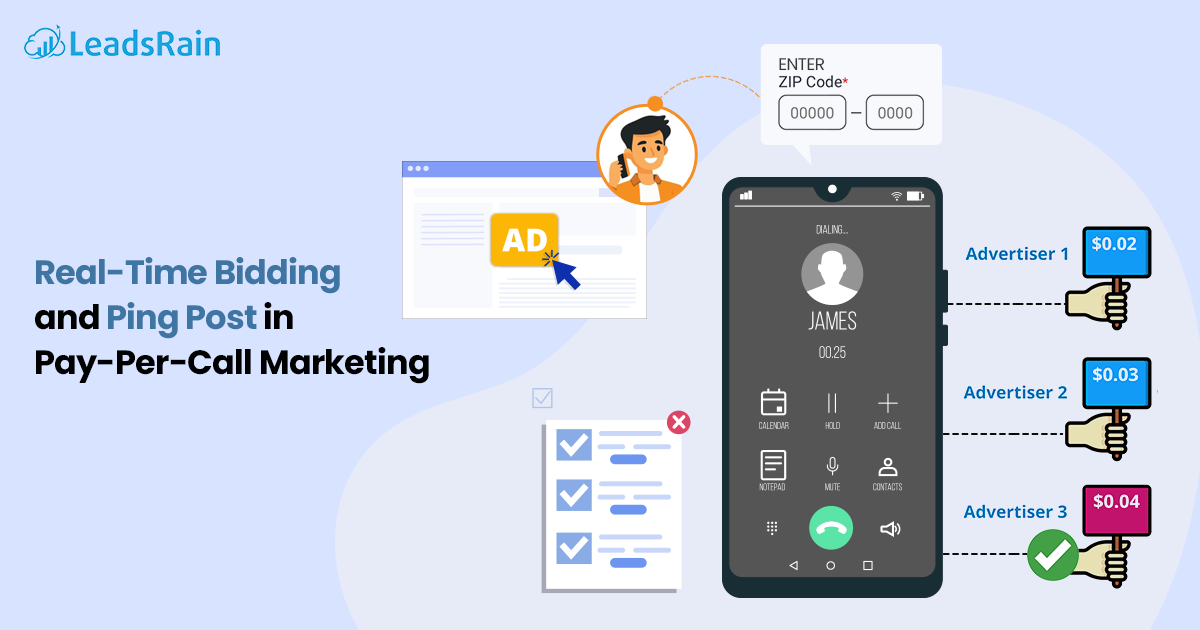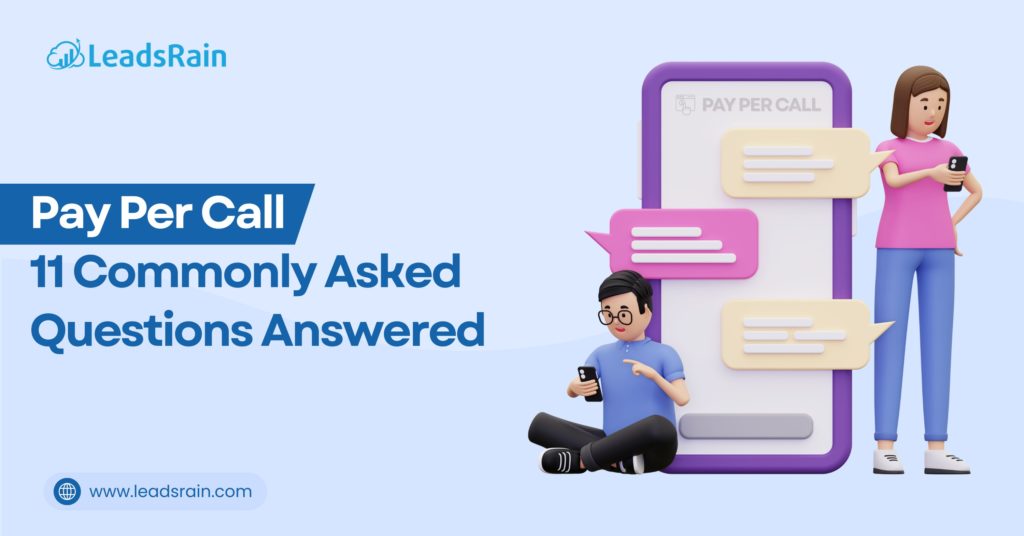The pay-per-call marketing is built on the ability to deliver high-intent consumers directly to businesses through phone calls. To achieve better efficiency, targeting, and profitability, advanced lead distribution mechanisms like real-time bidding (RTB) and ping post have been developed. These systems enable advertisers to dynamically assess and acquire calls based on specific criteria in milliseconds, ensuring that campaigns operate at maximum efficiency.
In this article, we will cover in detail how real-time bidding and ping post work in pay-per-call marketing, their technical process flow, differences from traditional routing, benefits, potential challenges, and key operational components involved.
What is Real-Time Bidding in Pay-Per-Call?
Real-time bidding in pay-per-call marketing is an automated auction process where multiple advertisers bid on an inbound call opportunity the moment it is generated. Rather than routing the call based on static rules, the system invites buyers to place competitive bids using real-time call metadata.
Process Breakdown:
- Call Generation: A consumer places a call triggered by an advertisement or campaign.
- Qualification Step: Initial caller data such as geographic location, service category, or responses to an IVR (Interactive Voice Response) are collected.
- Bid Request Dispatch: The system sends the call’s metadata to a pool of potential buyers simultaneously.
- Bid Submission: Each buyer analyzes the metadata in real time and submits a bid representing what they are willing to pay for the call.
- Call Routing: The system selects the highest or most appropriate bid, and the call is routed to the corresponding buyer immediately.
Real-time bidding ensures buyers only pay competitive rates for calls matching their exact targeting parameters, while publishers maximize revenue by fielding multiple offers per call.
What is Ping Post in Pay-Per-Call?
Ping post is a two-phase call distribution method that improves buyer decision-making by splitting the lead offering process.
Ping Phase:
Partial, non-sensitive call information is sent to potential buyers. This “ping” data typically includes caller location, service interest, or key IVR answers but excludes personal identifiers.
Post Phase:
Interested buyers, based on the ping data, submit their bids. Once a bid is selected, the full call connection is completed, and the buyer receives the consumer in real time.
This two-step model protects consumer data during the early evaluation stage while ensuring that buyers only bid on calls that align with their exact requirements.
Ping Post Flow Example
- A consumer calls to inquire about auto insurance.
- An IVR collects ZIP code and intent (“looking for full coverage”).
- The ping with this data is shared with multiple insurance advertisers.
- Buyers analyze the ping data and submit bids.
- The winning bid is selected, and the call is connected to that buyer instantly.
Core Differences Between Traditional Routing and Ping Post with Real-Time Bidding
| Traditional Call Routing | Ping Post with Real-Time Bidding |
| Calls are assigned based on fixed routing rules or waterfall logic | Calls are evaluated and sold dynamically based on real-time bidding outcomes |
| Lower control over call relevance and lead quality | Buyers selectively bid on calls matching exact filters |
| Static call distribution based on pre-set priorities | Intelligent, real-time distribution based on market demand and call quality |
| Limited monetization potential | Optimized monetization through competitive bidding |
Technical Components Behind Real-Time Bidding and Ping Post
Several systems and technologies must work together to execute RTB and ping post efficiently:
- IVR Systems: Gather preliminary caller data needed to structure the ping payload.
- Lead Distribution Platforms: Manage the ping post exchange and auction logic across multiple buyers.
- Real-Time APIs: Enable seamless and low-latency data transmission between platforms and buyers.
- Bidding Engines: Evaluate incoming pings and apply buying logic, filters, and bid prices automatically.
- Call Tracking Infrastructure: Monitors, records, and analyzes call outcomes for optimization and compliance purposes.
System latency, real-time decision-making capabilities, and seamless API integrations are critical to achieving optimal performance in RTB and ping post models.
Benefits of Real-Time Bidding and Ping Post in Pay-Per-Call
- Revenue Optimization: Calls are sold to the highest bidder, maximizing return on lead generation investments.
- Higher Call Quality: Buyers only engage with calls that meet specific targeting filters.
- Dynamic Campaign Management: Buyers can adjust bids, filters, and budgets dynamically based on real-time performance data.
- Reduced Risk for Buyers: Partial data in the ping phase allows informed bidding decisions before committing to a full call.
Challenges in Implementing RTB and Ping Post Models
- Latency Management: Real-time systems must respond within milliseconds to ensure a seamless consumer experience.
- Technical Complexity: Requires robust platforms, reliable integrations, and API management across multiple buyer endpoints.
- Data Privacy Compliance: Systems must handle caller data responsibly during the ping phase to adhere to regulations like TCPA and GDPR.
- Quality Control: Maintaining high lead quality standards is critical to preventing buyer dissatisfaction and maintaining long-term marketplace stability.
Conclusion
Real-time bidding and ping post are advanced distribution models that significantly enhance targeting, efficiency, and profitability in pay-per-call marketing. By understanding the technical workflow and requirements behind these systems, advertisers and publishers can better align their strategies with modern performance standards.For more information on setting up or optimizing your real-time bidding and ping post processes, contact our team at support@leadsrain.com.




